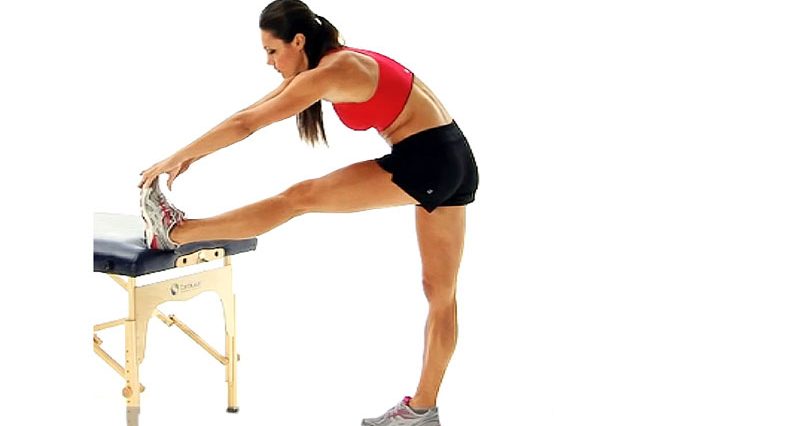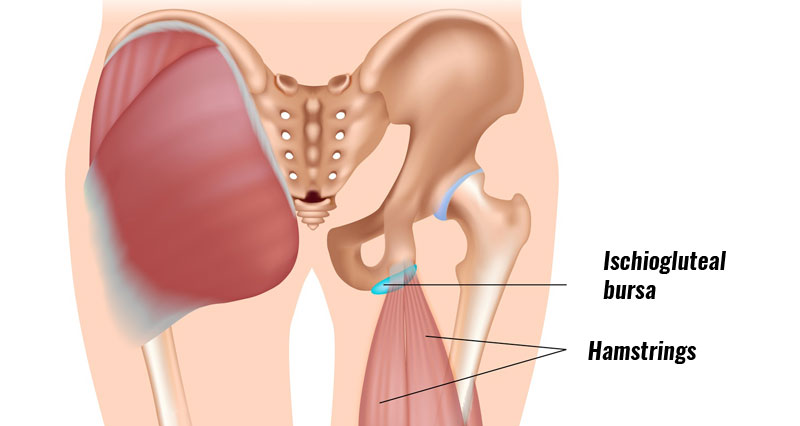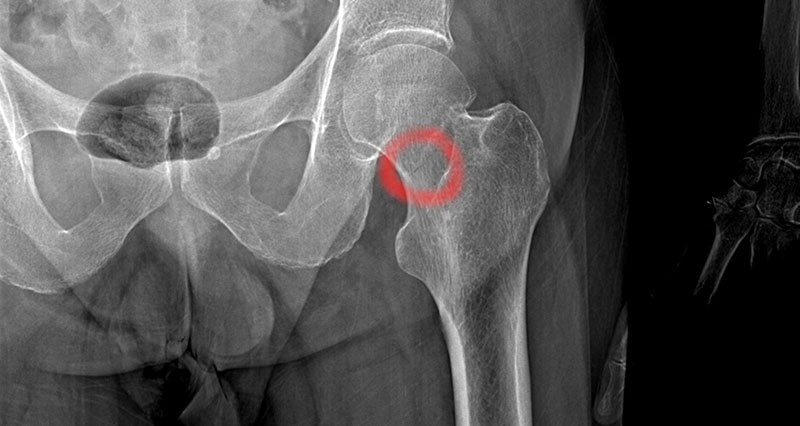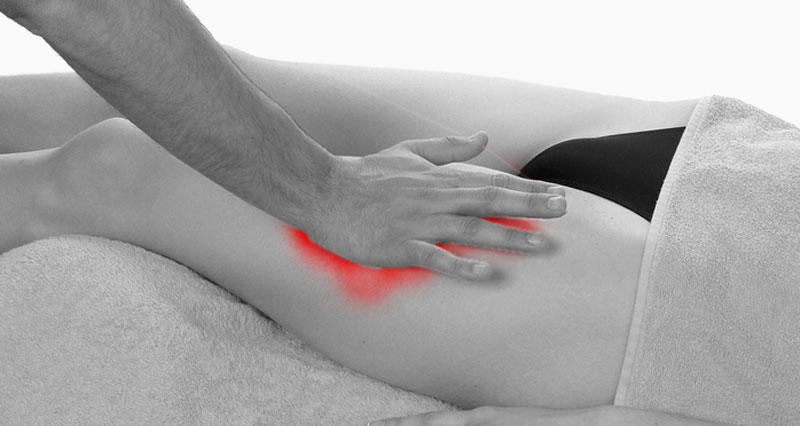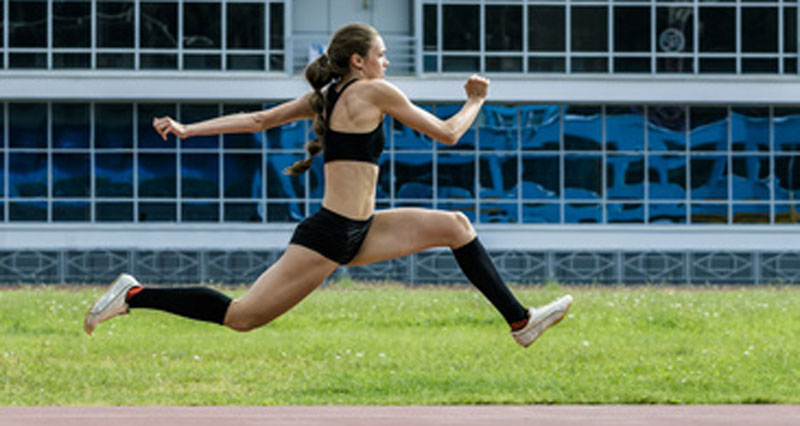Tight hamstring muscles may make you more prone to muscle strains, or contribute to other problems such as back pain and poor posture. Here we explain the causes, as well as a range of different hamstring stretches to improve flexibility.
Medically reviewed by Dr Chaminda Goonetilleke, 21st Feb. 2022
Poor hamstring flexibility
In addition to increased injury risk, tight hamstring muscles may affect sports performance negatively.
Forcing a muscle to move at speed outside of its comfortable range increases the chance of a pulled muscle.
Tight hamstrings cause your hips and pelvis to rotate back. As a result, your lower back flattens potentially causing back pain and sacroiliac joint pain.
Tight hamstrings can also be responsible for postural problems.
If your muscles have tightened up then blood has been squeezed out of them, therefore, your muscles are working at less than 100% of capacity and your performance will be down as a result.
The hamstring muscle group
The hamstring muscle group consists of the semitendinosus, semimembranosus, and biceps femoris muscles.
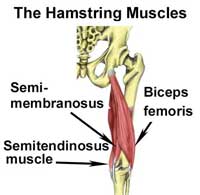
Why do I have tight hamstring muscles?
The causes of tight hamstring muscles are varied:
- Genetics is one reason. You can be born with naturally short hamstrings when some people are naturally supple. In general women and children are usually more supple than men.
- Not stretching enough. If you participate in a lot of sports and do not stretch properly then you are more likely to have your hamstrings tighten up. It is especially important to stretch properly after exercise as this is when the muscles are warm and more receptive to stretching. If you tend to make a beeline for the bar after your game of football, think about spending 10 minutes stretching first.
- Lower back injuries – can impinge on your sciatic nerve. This results in sciatica and increased muscle tension or even pain down in the legs.
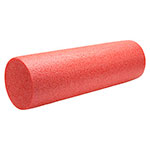
Foam Rollers
What level of hamstring flexibility is normal?
The normal range of hip flexion measured when laying flat on your back and raising the leg straight off the floor knee straight permitted by the hamstrings is in the region of 80-90 degrees. Anything less than 80 degrees is considered tight.
Regular sports massage for hamstring muscles and hamstring stretching to improve muscle condition will not only reduce the likelihood of injury but may also improve performance.
Hamstring stretches
Even if you are not naturally supple you can still improve your flexibility by stretching. Types of stretching include:
- Static – this involves applying a stretch to the muscle and holding it.
- Dynamic – involves relaxed leg swings to increase range of motion.
- Passive – needs a partner who applies the stretch.
- PNF and CRAC – various techniques that involve alternating muscle contraction and relaxing to increase the stretch.
- Ballistic – this involves ‘bouncing’ and forcing the muscle to go further than is comfortable and will damage it. Avoid ballistic stretching.
Assessing hamstring flexibility
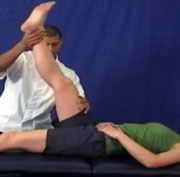
The athlete lies on their back and relaxes whilst the therapist gently raises the leg to apply a stretch.
They should notice increased resistance even before the athlete feels a stretch.
The athlete feels the stretch gradually increasing until eventually, they can go no further. Ideally, your leg should go vertically upwards without pain for good flexibility.
Static hamstring stretches
Why does it work?
When you initiate the stretch, signals from muscle spindles go to the spine which sends back signals to contract the muscle or resist the stretch.
After 6 seconds or so the Golgi tendon organs send signals overriding the signals from the muscle spindles enabling the muscle to relax into the stretch.
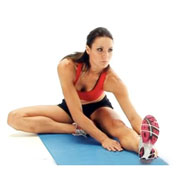
Static stretch seated
Sit on the floor with the leg to be stretched out straight and the other bent out of the way. Rotate the straight leg inwards and lean forward at the hips to feel a stretch under the thigh. Hold the stretch for 30 seconds.
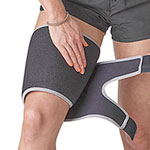
Buy Thigh Supports
Repeat the stretch throughout the day at least 5 times. This stretch can also be repeated with the foot turned outwards.
Standing hamstring stretch
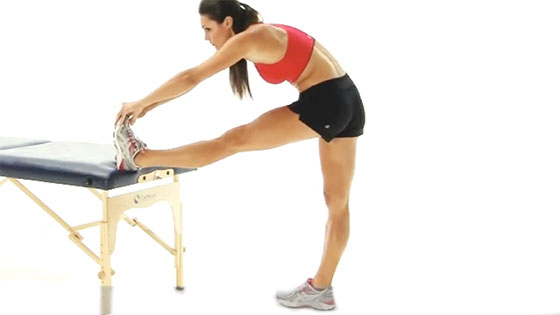
Stand with one leg up on a bench or similar. Gently lean forwards into the stretch. You should feel a gentle stretch at the back of the thigh.
Hold for 30 seconds. Repeat regularly throughout the day.
Hamstring stretch on the back
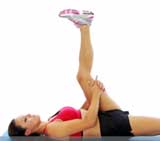
Stretching the hamstring muscles by lying on the back and straightening the leg upwards targets the muscle fibres nearer to the knee whereas the sitting hamstring stretch stretches the muscle fibre higher up the muscle nearer the buttocks.
Dynamic stretching
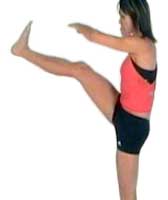
This involves gentle swings of the leg forwards and backwards gradually getting higher and higher each time. Around 10 to 15 swings on each leg should be enough. The stretches can be done early in the morning (be careful not to force it) as this will set the length of the muscle spindle for the rest of the day.
Why does it work?
This works by using the properties of muscle spindles. A muscle spindle is a sensor in a muscle that senses the amount of stretch and speed of stretch. By gradually taking the leg higher and higher the muscle spindle allows it to go safely and lengthen the muscle. If the muscle is forced then a stretch reflex is initiated which causes a reflex contraction (shortening) of the muscle. This is called ballistic stretching and can damage muscles.
PNF (proprioceptive neuromuscular facilitation)
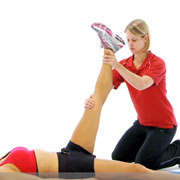
These are stretching techniques involving the stretch reflex. One type is called CRAC stretching (Contract, Relax, Agonist, Contract). The method is as follows:
Warm up gently either by a short run or lying on your back and pushing a straight leg down 20 times against light resistance. Lie on your back and get a partner to lift one leg up gently as far as it will go. Contract – Push against resistance with a straight leg at 25% effort.
The resistance must be great enough so that the leg cannot move. Hold for 10 seconds then relax. The athlete then uses the hip flexor muscles (agonists) to pull the leg up as high as they can, keeping it straight and holding this for up to 10 seconds. Repeat the process until no more gains are possible (contract).

Foam Rollers
Why does it work?
PNF stretching methods make use of the ‘stretch reflex’ as mentioned in Dynamic stretching. The muscle spindles sense stretch and speed of stretch, and Golgi tendon organs sense the tension in the muscle.
When an agonist muscle contracts (quadriceps) there are nerve impulses sent to the hamstrings (antagonist) to relax. (They would have to as if you straightened a bent leg it would not move unless the hamstrings relax).
There is also a theory that the muscle becomes stronger in a stretched position so the nervous system can allow it to stretch further without fear of tearing.
The overall program for stretching hamstrings
Do dynamic stretching first thing in the morning as this sets the length of the muscle spindles for the rest of the day. It should also always be done prior to fast, explosive exercise as part of a warm-up.
Static stretching – hold for 30 seconds, repeat 5 times, can be done 3-5 times a day. Once in the evening is often enough though to maintain.
PNF/CRAC – this can be done daily but do not overdo this as you could tire the muscle out. If in doubt three times a week is ok.
If you continually have problems with tight hamstrings especially if it is only on one side then you might have restricted nerves in the back or piriformis syndrome.
Massage for Tight Hamstrings
Tight hamstrings need stretching, but massage can also help by stretching the muscles sideways or transversely which cannot be done by simple stretching. In addition, increasing blood flow and relaxing muscles will help them stretch more easily. Scar tissue and adhesions can also be broken down using deep massage techniques.
Before attempting massage your therapist will check for contraindications. This means that massage would be dangerous to perform if you have any contraindications.
